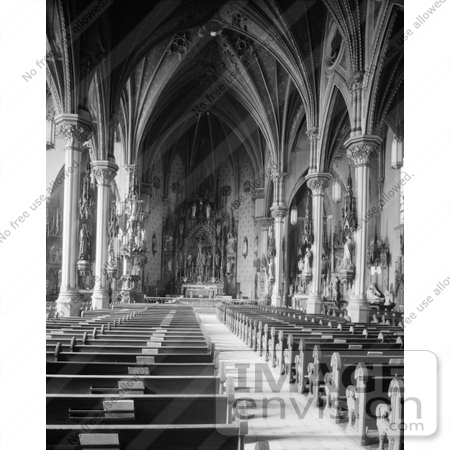


It dates to 1909, when west-side parishioners left St. The largest Rusin parish in the 1950s was Holy Ghost Byzantine Catholic Church, with approx. In 1995 it housed offices of the Ruthenian Byzantine Catholic Diocese of Parma and a Byzantine cultural-heritage institute. Although enrollment peaked at 600 in the late 1960s, the school closed in 1975. During the 1960s and early 1970s, a Byzantine Catholic high school was located on the church grounds. The structure was razed in 1961 to make way for the INNERBELT FREEWAY, and the church relocated to Parma. The parish was established in 1898, and a triple-domed church edifice was erected in 1913 at 2036 Scovill Ave. John the Baptist Byzantine Rite Catholic Church. The oldest Rusin church in Cleveland in 1995 was St. Each diocese was located in PARMA in 1995. The Ukrainian diocese, established in 1984, includes a majority of UKRAINIANS with some Lemkos. 1969) has included 11 Greater Cleveland churches, with Rusins and some HUNGARIANS, SLOVAKS, and CROATIANS as members. Although Rusin and Ukrainian immigrants at first cooperated in the new land, their regional allegiances and national differences soon made it impossible to maintain unity, and each group rallied around its own ecclesiastical administration. Sixty percent were Rusins (Carpatho-Ruthenians whose region was annexed by Czechoslovakia between the world wars), and the remainder were Ukrainians (Galician-Ruthenians whose region was annexed by Poland between the world wars). Prior to World War I, 2 separate groups existed among Byzantine Rite Catholics in the Austro-Hungarian Empire. The ethnic groupings reflect historical divisions in European homelands. Reflecting this bifurcation, Cleveland has 2 dioceses, the Diocese of the Ruthenian (Rusin) Byzantine Catholic Church and the Ukrainian Byzantine Catholic Diocese of St. In 1916 the Vatican established 2 separate ecclesiastical administrations for Byzantine Rite Catholics in the U.S. As of 1924, married priests could enter the country, but married men could not be ordained as Byzantine Rite clergy in America, although clerical marriage continued among European Byzantine Rite Catholics. Eventually the celibacy decree was modified. The majority of Cleveland's early Russian Orthodox churches were built by these former Byzantine Rite Catholics in cooperation with the city's Carpatho-Russian Orthodox immigrants. Byzantine Rite Catholics defected to the Russian Orthodox church. A decree in 1907 permitted only celibate priests to be admitted to America. around the turn of the century, with the arrival of Byzantine Catholic immigrants and their married clergy. This latter practice caused an uproar among Latin Catholics in the U.S.

Masses were performed in Old Slavonic rather than Latin the Julian calendar (rather than the Gregorian) was observed the Eastern form of the cross (3 crossbars, the lowest oblique) was retained and marriage of clergy was permitted. The Byzantine Rite Catholic Church retained various practices of the Eastern church while acknowledging the supreme leadership of the pope. Initially the name Uniate designated the union of the two faiths later, Greek Catholic or Byzantine Rite Catholic church was preferred.

A new institution was preferable to direct absorption into Roman Catholicism, unacceptable to many from EASTERN ORTHODOX CHURCHES. The Byzantine Rite Catholic Church resulted from efforts by the Roman Catholic Church to convert Eastern Orthodox Christians in the old Austro-Hungarian Empire during the 16th and 17th centuries.


 0 kommentar(er)
0 kommentar(er)
